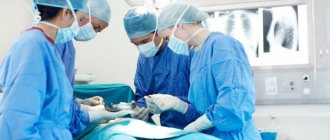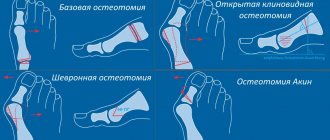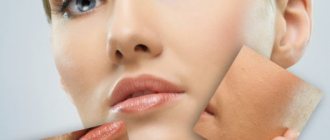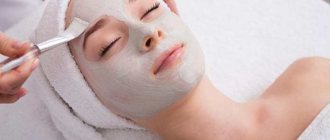Plastic surgery has become increasingly popular in recent years. Few people know exactly how it differs from reconstructive surgery. However, if you decide to change something about yourself in this way, then first you should figure out what the reconstructive surgery will look like and what exactly it is needed for.
What is reconstructive plastic surgery?
It is used to recreate or restore the shape or functionality of a specific body part or organ (such as the lower leg). Unlike conventional plastic surgery, such an operation is more needed by people with congenital changes or those who have serious consequences after injuries.
With this type of plastic surgery, the necessary material is transferred from another area. It is taken from the same patient. The necessary tissues can also be taken from another person if they are compatible. Often special implants are used to replace the necessary material.
This operation can be performed on any part of the human body. Therefore, it can be performed by surgeons with any specialty. Not only a plastic surgeon, but also a gynecologist, for example, can perform the procedure. It all depends on the area where plastic surgery is planned.
In order to better understand what this type of operation is, it is necessary to note the main differences between plastic surgery and it. In fact, reconstructive is a subtype of plastic. There are several conventional divisions of this area of surgery. Reconstructive plastic surgery can be performed for aesthetic purposes, such as umbilicoplasty. In this case, the operation is prescribed due to the initiative of the patient himself, who wants to improve the shape of the body or face for an aesthetic effect. The purpose of the procedure may be reconstruction when the operation is performed for medical reasons. However, there are no serious distinctions between the listed subspecies. After all, it includes elements of improvement, aesthetics, and vice versa.
Hospital Center for Plastic and Reconstructive Surgery of the 3rd Central Military Clinical Hospital named after A.A. Vishnevsky
Central Military Clinical Hospital (CVKG) named after. A.A. Vishnevsky is a multidisciplinary medical and preventive institution of the Ministry of Defense of the Russian Federation, which includes 16 specialized centers, 90 or more medical and diagnostic departments, a clinic and a branch.The hospital is located in a picturesque corner of the Moscow region - Krasnogorsk, 3 km from the Moscow ring road, which meets the requirements of world standards for the location of medical institutions.
Over its more than 35-year history, the Central Military Clinical Hospital named after. A.A. Vishnevsky achieved significant results in diagnostic and treatment work and became one of the leaders not only of military medicine, but also of Russian healthcare.
In 1997 the hospital was recognized as the “Best Medical Center in Moscow”, and in 2003 it was awarded the gratitude of the President of the Russian Federation.
The Center for Plastic and Reconstructive Surgery has the following priority areas:
- Defects of various localization, congenital and acquired etiology.
- Plastic and aesthetic surgery.
- All types of plastic and aesthetic surgeries on the breast and face, correction of body contours.
- Traumatology. Treatment of false joints and osteomyelitis of the extremity bones using revascularized bone and soft tissue autografts. Combustiology.
- Treatment of burns and frostbite, correction of post-burn deformities.
- Oncology. Tumors of soft tissues and bone structures. Reconstruction of the mammary gland, lower jaw, elimination of defects after excision of tumors on the surface of the body.
- Replantations, developmental anomalies of the limbs, ears, post-burn deformities, alopecia.
Clinical autotransplantology:
- Treatment of pathological conditions associated with the need to close defects of various etiologies, localization and composition by microsurgical transplantation of free revascularized and reinnervated tissue complexes.
- Restoring function by replacing lost functionally active anatomical structures (muscles, joints, bones).
Clinical replantology:
- Replantation of limbs and their segments amputated as a result of trauma.
- Treatment of acute limb injuries, including their revascularization and reinnervation.
Microsurgical interventions on small-diameter vessels and nerves:
- Treatment of vascular diseases associated with acute or chronic occlusion.
- Treatment of damage to nerve trunks, including restoration of nerve conduction by transplantation of nerve autografts.
Facial reconstruction
Reconstructive facial plastic surgery is needed when it is necessary to eliminate the consequences of burns, operations or serious injuries, remove birth defects, etc. Facial reconstruction is necessary to restore or recreate tissue or organs in the area that have been damaged. For example, after a burn, a skin graft is performed.
The material is taken from the same person, but from a different part of the body, and transplanted onto the facial part. Otoplasty is performed as part of reconstructive surgery. It consists in the fact that doctors restore the shape in the ear area. Lip plastic surgery is performed to restore their shape or size, the deformation of which occurred as a result of a burn or injury.
Blepharoplasty is also performed. This is eyelid plastic surgery, which can correct the eyelids in various ways, change their shape, the shape of the eyes, and get rid of imperfections. In particular, this applies to age-related changes, when excess fatty tissue and skin on the eyelids are removed. In the same way, you can correct the negative consequences of paralysis or injury.
RECONSTRUCTIVE SURGERY
Reconstructive surgery is a branch of aesthetic surgery that deals with the restoration and treatment of deeply damaged tissues of the body. For example, with extensive burns, after removal of tumors, with severe injuries with significant damage to the skin, when independent tissue healing is impossible or leads to the formation of large areas of scar tissue, reconstructive surgery is irreplaceable. With its help, you can restore the functions of the affected organ and, accordingly, avoid disability and regain your normal appearance, which is also very important.
Skin graft
The most common method used to restore skin is a skin graft. It can be taken from any part of the body, but skin taken from the thigh or buttock is typically used. A thin layer of epidermis is removed with a special instrument and applied to the surface of the wound. If the surface of the wound is clean and healthy, after a few days new vessels grow into the graft and engraftment occurs. The part of the body from which the graft was taken heals on its own, like a regular superficial wound.
Along with skin grafts, skin flaps are often used, which differ from the former in that they have their own blood vessels and nerves. This can be a piece of adjacent skin that is simply moved onto the wound, or a flap of skin that is completely cut out and moved to the wound from another part of the body. In order for the flap to take root in its new location, its vessels are sutured to the vessels of the wound surface.
Another method used in reconstructive surgery is skin augmentation by stretching it from adjacent areas. This method uses the natural property of the skin - elasticity. A small incision is made in the skin, into which a silicone balloon with a tube and valve (expander) is inserted. The balloon is filled with saline solution, once a week liquid is added to it and thus, due to a gradual increase in its volume, the skin above it is stretched. When the desired size is reached, the can is removed and new skin is pulled over the area that needs to be covered. This method is often used during mastectomy - removal of the breast and subsequent implantation of an implant in its area.
Like all other operations, skin grafting operations require preliminary preparation. This is, first of all, a thorough examination of patients, which includes consultations with a surgeon, therapist and anesthesiologist, biochemical blood tests, ECG recording, ultrasound and, if necessary, other research methods.
Postoperative recovery extends over a fairly long period. The tissues need about six months to adapt to their new position. There is no need to be afraid that at first the tissues are hard and swollen - they will gradually soften and the swelling will subside. Scars, as a rule, lighten, become thinner and become less noticeable. But this doesn't always happen. Sometimes a second operation may be required to remove skin graft scars.
Microsurgery
Microsurgery is a branch of plastic surgery that deals with operations on microstructures, such as blood vessels and nerves. For these operations, microscopes, magnifying glasses, as well as special instruments and the finest threads, thinner than a human hair, are used. The capabilities of microsurgery allow transplantation operations not only of skin, but also of internal organs, muscles, and bones. Many patients who in the past did not have a chance to live a full life, thanks to microsurgery, received a chance to live a full life. Areas of application of microsurgery
Facial nerve paralysis
Maxillofacial surgery. With the help of microsurgery, it is possible to restore the nerve innervation of paralyzed facial muscles by transplanting a nerve graft. To do this, a secondary nerve is taken from the back of the leg and attached to a branch of the facial nerve on the healthy side. Then it is carried out under the skin on the paralyzed side. After which the germination of nerves and restoration of innervation begins. The process takes about six months. This operation can be performed only in the first year after the onset of paralysis. After this period, the muscles die irreversibly. But even in this case, microsurgery can help - by transplanting new muscle fibers.
Tumors
Removal of a large tumor, or a tumor located in a prominent place, can lead to both dysfunction of this organ and a cosmetic defect. Reconstructive microsurgery can also help cope with these problems.
This question is most relevant during mastectomy, that is, removal of the mammary gland. Three methods are used for breast reconstruction. We talked about the first two of them - stretching the skin with an expander and transplanting a skin flap. The third method involves removing the muscle along with the skin above it from the back and moving it, along with the vessels, through a tunnel in the armpit to the chest. All three methods can be combined with the implantation of an artificial implant.
Another method used for breast reconstruction is fat tissue transfer from the abdomen to the chest. Often, the underlying abdominal muscle is also transplanted along with the fat to preserve blood circulation in the flap and, accordingly, faster engraftment. The advantage of this method over the previous ones is that the new breast looks more like a natural, non-operated one. It is softer and less susceptible to the development of contractures.
During a mastectomy, the nipple usually suffers as well. There are several methods for its restoration using microsurgery. You can transplant part of a nipple from a healthy breast, you can form a new nipple from the tissue of a toe or earlobe, you can cut flaps of skin from the tissue of the reconstructed breast and roll them into tubes to form a bulge in this place. Once the nipple is created, the areola is formed using a skin graft or, more popular now, a tattoo.
When removing tumors of the mouth and throat, sometimes it is necessary to remove part of the tongue or jaw, and this not only disfigures the patient, but also does not allow him to lead a normal life - the chewing process is disrupted, speech becomes slurred. With the help of plastic surgery, it is possible to restore, at least partially, those functions that were lost as a result of surgery to remove the tumor. For example, when part of the lower jaw is removed, a copy of it is formed from the femur and transplanted along with its vessels. Afterwards, dental implants are implanted into it, and the jaw begins to function normally, and, importantly, look normal. With the help of microsurgery, it is also possible to restore parts of the esophagus, which allows you to abandon the use of a gastrostomy tube and establish an independent swallowing process.
The possibilities of reconstructive microsurgery are also used to correct congenital developmental defects, such as cleft lip, developmental defects of the skull and genitourinary organs, to treat impotence, as well as during sex reassignment surgeries.
Reconstructive surgery is a complex art that returns people not only health and normal appearance, but also self-confidence. Surgeons at the Artimeda Medical Clinic have performed hundreds of reconstructive operations, of which they are rightfully proud. If you are faced with the need to resort to reconstructive surgery, trust our specialists.
- Breast reconstruction
- Reconstruction of the ears
- Nose reconstruction
- Skin graft
- Microsurgery
- Scar correction
Breast reconstruction
Such operations in this area can be carried out not only for cosmetic, but also for therapeutic purposes. Breast surgery is prescribed for:
- birth defects;
- funnel chest;
- getting injured or;
- undergone surgery.
Plastic surgery can be performed for musculoskeletal and bone surgery, which normalizes the functioning of the respiratory system and improves the cardiovascular area. Also, with the help of such an operation, you can restore the correct appearance of the body.
Skin reconstruction methods
In order to achieve a satisfactory cosmetic effect, surgeons use various reconstruction methods. The main methods by which defects in the skin and underlying tissues are eliminated:
- Direct connection of tissues.
- Replacement with local tissues.
- Autoplasty (transplantation of one's own skin).
- The use of artificial implants.
The choice of technique is individual in each specific case. Surgical tactics are determined by the surgeon depending on the nature and extent of skin lesions.
Aesthetic analysis of the face:
Gonzales-Ulloa based his method of facial profile plastic surgery on the relationship of facial structures with the facial plane, which he called the zero meridian.
On an ideal facial profile, the facial plane lies at an angle of 85 92 to the Frankfurt horizontal, when passing through the nasion (N). On the forehead, the glabella (G) lies anterior to this plane and then deviates slightly posteriorly. The groove of the nasal wing is located posterior to the plane. In the lower part of the face, the most prominent point of the chin should lie in a plane. Using this idea, a plane aligned approximately perpendicular to the Frankfurt horizontal through the nasion (N) will show the relative degree of protrusion or retrusion of the upper, middle, and lower parts of the face. This method does not take into account the angle of the neck or the prominence of the nose when analyzing the face. The aesthetic triangle was described by Powell and Humphreys in 1984. This method of facial analysis takes into account all the basic aesthetic formations of the face and illustrates their mutual dependence. Angles that were considered independently can now be analyzed together to assess facial harmony. First you need to define one additional angle that has not yet been considered. The nasomental angle is formed by connecting the line of the back of the nose and the nasomental line. The analysis begins at the forehead, which is relatively unchanged and less subject to surgery. The facial plane is constructed between the glabella (G) and pogonion (Pg).
The face plane determined in this way must intersect the Frankfurt horizontal plane at an angle of 80-95. The glabella (G) is used as a landmark on the forehead rather than the nasion (N) (as Gonzales-Ulloa did), since the position of the nasion (N) can be changed relatively easily by deepening the nasofrontal angle (NFr). The nasofrontal angle (NFr) is then drawn as described above. This angle should be 115-135°. The nasofacial angle (NFa) can now also be measured using these lines. This angle should be within 30-40°. A nasomental line is then drawn between the pogonion (Pg) and the tip of the nose (T). It creates the most important angle of the aesthetic triangle, the naso-mental angle.
The ideal range for this angle is 120-132°. The upper line of this angle, the line of the back of the nose, primarily depends on the protrusion of the nose. The lower line, the nasomental line, is modified by the position of the chin. The nasomental line also allows you to assess the horizontal position of the lips. The upper lip should end 4 mm, and the lower lip 2 mm posterior to this line. Finally, the chin-cervical angle (MC) is measured. This angle allows you to evaluate the line of the neck and its relationship to the lower part of the face, which is established by constructing a line between the cervical point (C) and the lowest point__ of the chin (Me), intersecting the plane of the face.
The angle at the intersection should be 80 95°. Thus, the aesthetic triangle is influenced by the nasofrontal angle (NFr) or nasion depth (N), the degree of nasal prominence, and the position of the chin. Its correspondence can be confirmed by the range of normal values of the primary or nasomental angle and the ratio of the upper and lower lines of the latter to the plane of the face (i.e., nasofacial angle) and to the horizontal position of the lips (i.e., 4 mm to the upper lip and 2 mm to the lower lip).










